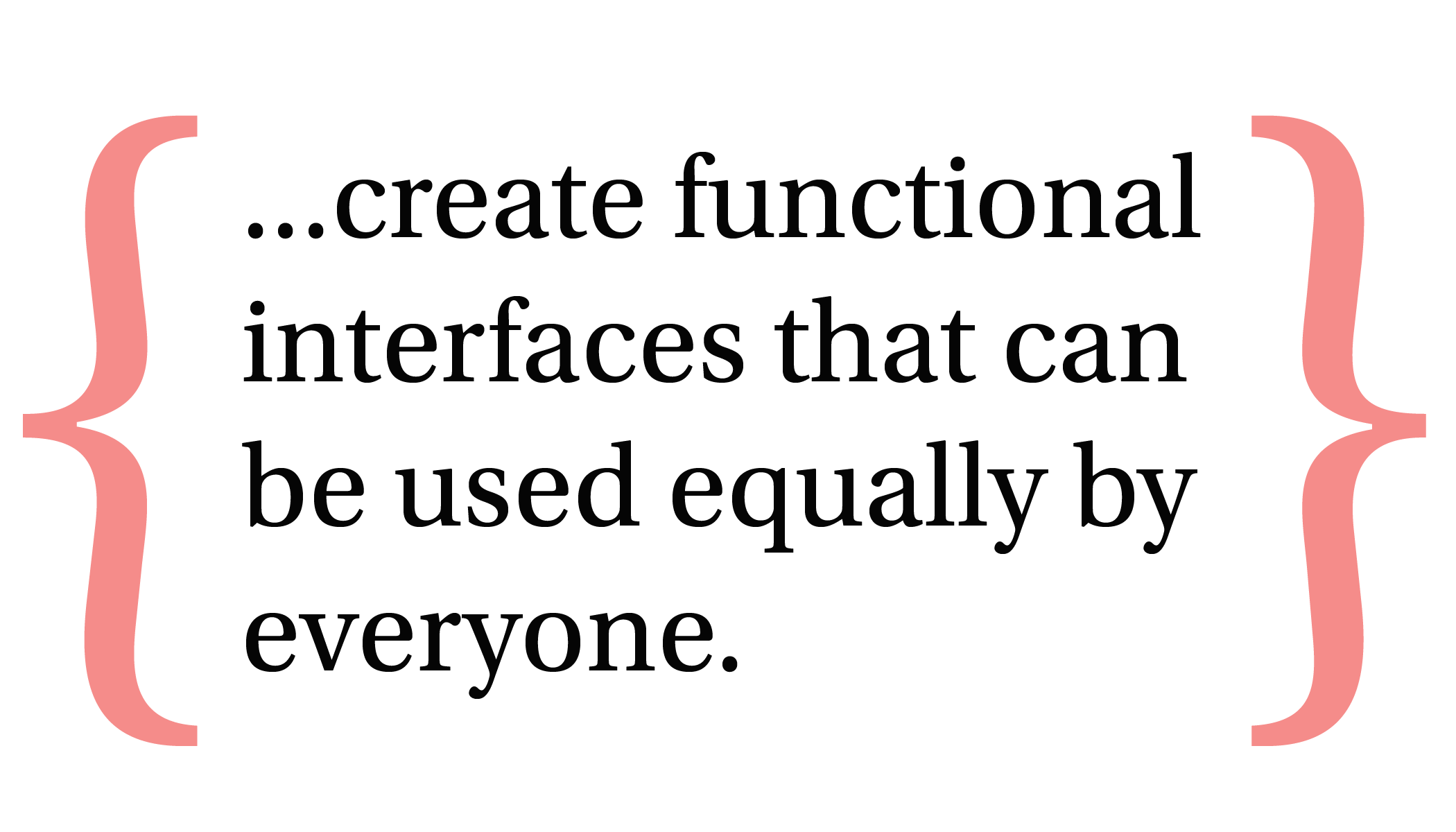
Accessible vs Inclusive Web Design
There are many terms used in discussions about designing for accessibility. Although these terms have overlapping ideas, the end goals are often different. It is important for designers to understand the intersections of these ideas in order to achieve their desired outcomes.
Accessible Web Design
Accessible design is the most used term and can be defined as the principles of extending standard design to people with various performance limitations. This is achieved by making products or services adaptable to different users and having standardized interfaces to be compatible with special devices such as a screen reader. [509] The term accessible design was derived from the American Disability Act (ADA) standard for accessible design. This term is often used in conversations about businesses complying with ADA standards, and often means that the bare minimum requirements are being met for accessible design practices.

Inclusive Web Design
The definition of inclusive design is more loosely defined than accessible design. This is because it is an evolving philosophy instead of a fixed set of design criteria. The end goal in this approach is to create functional interfaces that can be used equally by everyone; regardless of age, gender or disability. This forces the design process to expand in order to accommodate a diverse range of users. Inclusive design also places importance on the balance between form and function. However, a greater understanding of the users’ requirements, desires and expectations is always the highest priority.
Other Design Practices
There are other schools of design thinking that may be helpful to consider. Universal design is rooted in barrier-free design and emphasizes the design of products usable to everyone to the greatest extent possible without the need for assistive devices. The issue with this is that what can be barrier-free for one person can be a barrier for someone else. Designers must address issues from a broader angle. Cooperative design or participatory design involves full cooperation between the users and the development team; who share their respective knowledge and experiences by designing together. This method has been expanded to place emphasis on including users with some form of disability. Cooperative design can be beneficial to human-centered design, but can be difficult to implement in reality.
Conclusion
These methods of design thinking may not appear equal, but they all have their own place in real world applications. As designers, it is important to keep the user at the forefront of our designs, but using some method of accessible design practice is better than none. Want to learn more about this topic? Check out the sites below.
Other Articles
Sources
-
Persson, Hans, et al. "Universal Design, Inclusive Design, Accessible Design, Design for all: Different Concepts--One Goal? on the Concept of Accessibility--Historical, Methodological and Philosophical Aspects." Universal Access in the Information Society 14.4 (2015): 505-26. ProQuest. Web. 24 Jan. 2021.